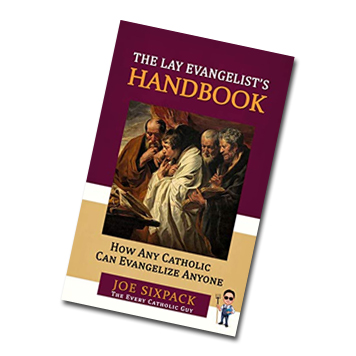Neither Left Nor Right, But Catholic . . . Economics, American Ideologies, And Catholic Social Teaching
By STEPHEN M. KRASON
(Editor’s Note: Stephen M. Krason is professor of political science and legal studies and associate director of the Veritas Center for Ethics in Public Life at Franciscan University of Steubenville. He is also co-founder and president of the Society of Catholic Social Scientists and a lawyer. Among his books are: Liberalism, Conservatism, and Catholicism; The Transformation of the American Democratic Republic; Catholicism and American Political Ideologies, and a Catholic political novel, American Cincinnatus.)
+ + +
Jane Clark Scharl wrote an article in Crisis in December 2019 discussing how the Republican Party has moved away from an extreme notion of capitalism — of economic freedom — that characterized it in the past and so is now more in line with Catholic teaching. She suggested that this is a result of the Trump presidency. She is correct in her assessment about the Republican Party, but this development predates Trump.
It was apparent in the principles and policy positions set forth by the Republican Party in 2012, the year that Mitt Romney was its presidential candidate — even if, as she mentioned, he didn’t identify with them.
In two books, 25 years apart, I examined how American liberalism and conservatism measured up to Catholic social teaching as enunciated in the papal encyclicals. In those books, I looked at how each of the major American political ideologies conformed to or contrasted with that teaching both on basic political philosophy and in major public issue areas. Regarding the former, I considered the thought of representative thinkers and commentators of each ideology, and on the latter I examined particular national party platforms that were reputed to be especially liberal (for the Democrats) and especially conservative (for the Republicans).
I determined which ideology was closer to Catholic social teaching in each of the areas examined and then came to a conclusion about which ideology overall was closer to the teaching. My first book, in 1991, examined the ideologies from World War II until then, which meant that two versions of liberalism had to be looked at — that before the late 1960s and that after then (what Catholic historian James Hitchcock called the “old” and the “new” liberalism). After the 1960s, liberalism distinctly moved to the left. What my analysis showed was that conservatism was closest to Catholic social teaching, but just slightly more so than the old liberalism. The new liberalism was far behind.
In my 2017 book, Catholicism and American Political Ideologies, I undertook the same evaluation of the two ideologies in the new millennium. The old liberalism by then was long gone. Serious Catholics would not be surprised to learn that my analysis showed that conservatism was clearly closer to the Church than today’s leftist, ultra-secular liberalism.
To evaluate millennial conservatism’s thinking on public policy questions, I chose to look at the 2012 Republican platform. This was because it was reported that Republican insiders who had been involved in drafting previous platforms said it was actually, up to then, the most conservative in the party’s history. This was despite the fact that candidate Romney was not conservative (he apparently had very limited influence on shaping the platform).
What I concluded by looking at the various platform provisions — the conservative platform was a good representation of the thinking of American conservatism generally on current public policy questions — was that on economics and social welfare policy (and also the other issues areas I examined), while not without drawbacks, conservatism could be judged to essentially agree with the principles of Catholic social teaching. This meant, of course, that the Republican Party conformed, since platforms state the principles of a political party. (To be sure, I concluded — by examining the distinctly liberal 2012 Democratic Party platform — that on economics and social welfare policy current liberalism also conformed to Catholic social teaching, despite its deviation from Church teaching in so many other areas.)
This contrasted with my analysis in 1991, which showed that conservatism then — and, implicitly, the Republican Party, as its platforms were also my source on public policy for that earlier study — conformed less than either version of liberalism (i.e., pre- and post-1960s) to Catholic social teaching on economics and social welfare policy.
Looking at the points in the 2012 platform in comparison to papal teaching readily shows why I came to the conclusion I did. The platform unsurprisingly commends the free market as the path to job growth and prosperity for all. While the Church has always supported economic freedom within moral limits, John Paul II particularly commended the virtues of the market economy. While the platform stresses the value of competition in economic matters, there is no indication that it sees competition as the be-all-and-end-all without any restraint whatsoever. That is the notion of competition the Church rejects. Moreover, strongly embracing the norm of competition could be viewed as a way to stop economic domination by a small number — which is something the Church also opposes.
The encyclicals have stressed the need to ensure employment. By stressing job growth, the platform shows it agrees. By the way, the Church has never said that the state is obliged to actually provide jobs for people but just that it has a role to help avoid unemployment. The platform opposed the Obama administration’s extension of unemployment benefits to three and a-half years. It didn’t oppose unemployment compensation, but the fact that such a long term could be excessive (and perhaps a disincentive to people to seek work). Here, we can recall Paul VI in Populorum Progressio saying that indolence should not be encouraged. Further, as far as employment is concerned, the platform favors “family-friendly options” in the workplace. That sounds like it is solicitous of the concerns the Popes have in saying that employment demands must be attentive to the family needs and situations of workers. It even encourages employee stock-ownership arrangements and, in general, private property being owned by more people.
While the Popes haven’t specifically endorsed the employee stock-ownership idea, it conforms to their stress on employee participation in their enterprises and various Catholic thinkers have touted it. The Popes have emphasized more people becoming owners of property.
The platform is critical of “excessive taxation and regulation.” Leo XIII in Rerum Novarum rejected excessive taxation as an unjust violation of the right of private property. John Paul II and Benedict XVI both spoke about the problems of bureaucracy which is what comes to mind when excessive regulation is mentioned. The platform stresses cooperation as the norm for worker-management relations, something repeatedly sounded by the encyclicals. It calls for attention to the needs of the agricultural sector, which rings of Mater et Magistra. It even wants to assist the family farm, which Popes John XXIII and Francis expressed support for.
While the platform’s support for a national right to work law may be interpreted by some as anti-worker, it could be viewed simply as a way to stop excessive power by unions — whose leadership sometimes has been criticized as being increasingly out of touch with the everyday workers they represent. The platform also criticizes unions for encouraging confrontation instead of cooperation between workers and management and singles unions out for violating labor laws. It does not give any indication it opposes the labor laws themselves.
On balance, the platform is skeptical of unions while historically they — or at least the right to form them — has been supported by the Church. Perhaps this is one of the weak spots for the Republican Party — and conservatism — from the Church’s standpoint.
A question might also be raised about the platform’s explicit support for free trade — Populorum Progressio says that free trade must give way to the demands of social justice — but it’s clear that it doesn’t embrace it outright in practice. It speaks about trade agreements — which by their definition means that trade is carried out according to agreed-upon conditions — and points to the need to make adjustments in trade relations with countries like China. It also agrees with Benedict XVI about the adverse effects of “outsourcing” (although it sees different causes for them).
When it comes to social welfare policy, the platform supports all of the major federal social welfare programs: Social Security, Medicare, Medicaid, and Food Stamps. It just wants them to be reformed and put in better fiscal shape. It thinks that the Food Stamp and similar programs would better be administered at the state level. That could be said to show a concern about subsidiarity, which is one of the central principles of Catholic social teaching.
Increased Momentum
Again, on economics and social welfare policy the thinking of conservatism and the Republican Party (as seen in the 2012 platform), to quote my book, “conforms pretty well to Catholic social teaching.”
So, the Republican Party’s closeness to Catholic social teaching on economics, while it has certainly undergone an evolution, did not begin with the Trump candidacy and presidency.
One can only speculate as to the reasons for this change. It could be due to more Catholic presence and influence in the Republican Party; or the fact that now Republicans are increasingly representing working class, lower middle class, and rural constituencies in Congress; or that as the party sheds its classical liberal past (that is, some version of laissez-faire) it gets more in touch with the principles of conservatism at its best, which in many respects are close to Catholic social teaching; or other factors.
Perhaps, though, the Trump presidency has given this new direction increased momentum.











